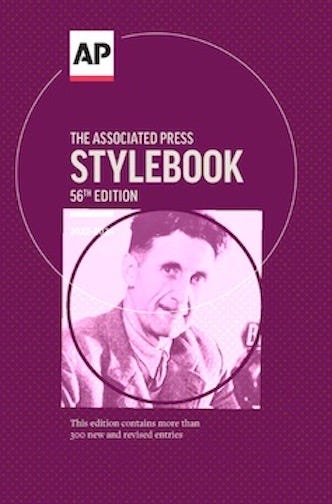If George Orwell Wrote a Style Guide
It would be the AP’s “Transgender Coverage Topical Guide”
Two years before he wrote 1984, George Orwell penned an essay, “Politics and the English Language.” He observed that “political language is designed to makes lies sound truthful and murder respectable, and to give an appearance of solidity to pure wind.”
The Associated Press Stylebook editors seemingly embraced that as their assignment, at least judging by their June 2 tweaks to their “Transgender Coverage Topical Guide.”
The 70-year-old AP Stylebook is the leading style and usage guide for many newspapers, magazines, newsrooms, and public relations offices. Journalists and editors largely abide by its grammar, spelling, and punctuation rules and specific styles for everything from numbers to acronyms. AP editors are supposed to regularly update the Stylebook in order to keep up with changes in language and societal norms.
The revised Transgender entry runs 3,000 words, setting forth what it says is the acceptable standard for journalists when “writ[ing] about and interview[ing] transg…




